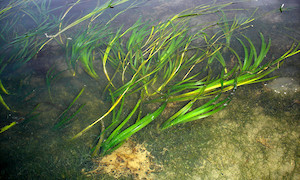
Some regions of the Chesapeake Bay have improved while others have worsened. The Upper Bay, for example, has shown improvements over the last 20 years, largely due to the recovery of aquatic grasses. In contrast, the health of the Upper Eastern Shore has declined significantly in the last four years due to a decrease in aquatic grasses. Underwater aquatic grasses, which are a fundamental habitat for crabs and many fish, continued to improve in many regions of the Bay during 2008. Although still below the restoration goal, this improvement is encouraging after recent significant losses in 2006. 2008 showed an expansion of freshwater grasses in the Upper Bay, eelgrass and/or widgeon grass in the Mid Bay, Lower Bay, and Lower Eastern Shore, but showed a reduction of aquatic grasses in the Choptank River and the lower Potomac River.
The Water Quality Index combines the water quality threshold scores (chlorophyll a, water clarity, and dissolved oxygen) into a single overarching index. Good overall water quality is characterized by having high index scores and poor overall water quality is characterized by having low index scores.

